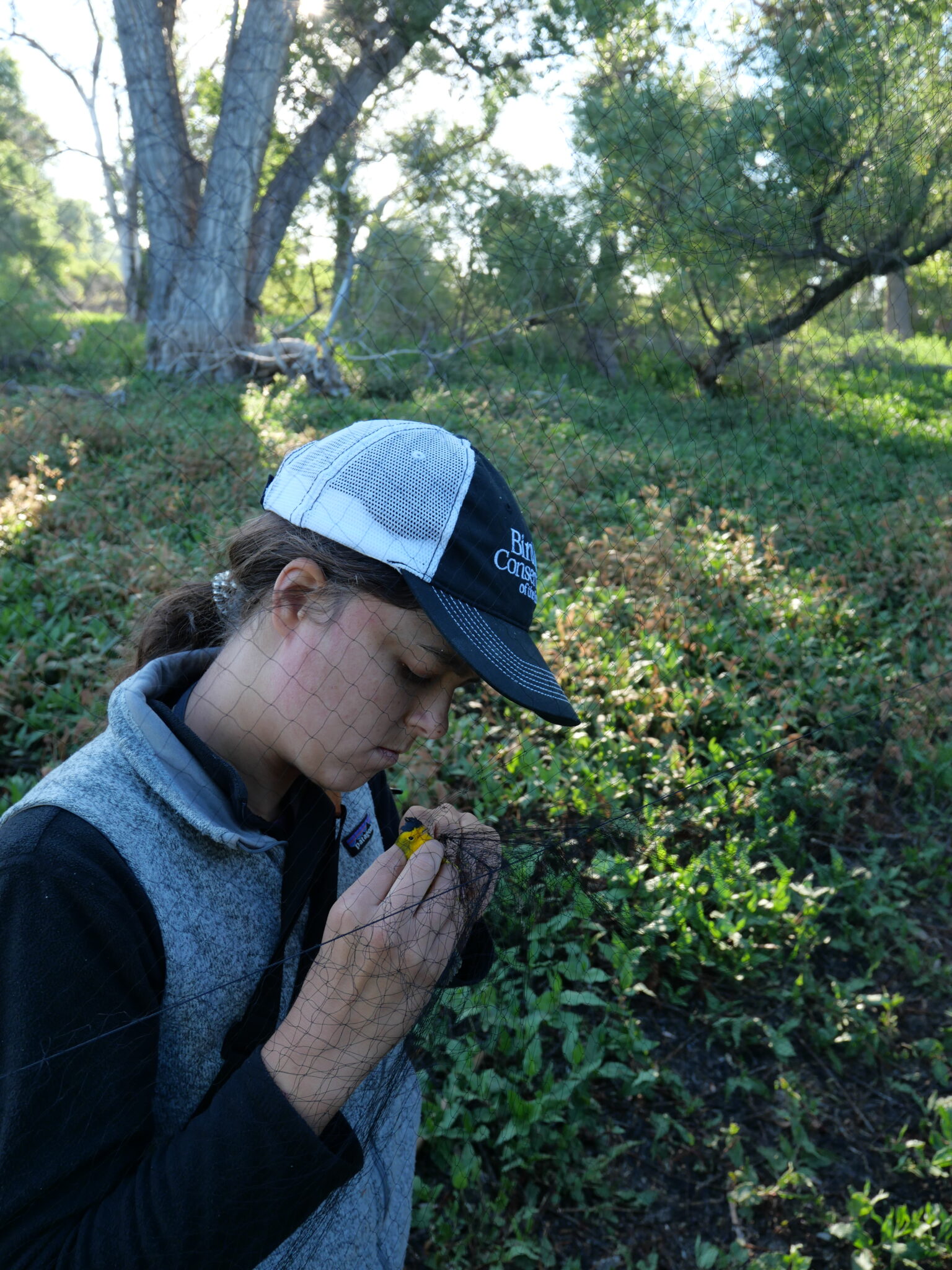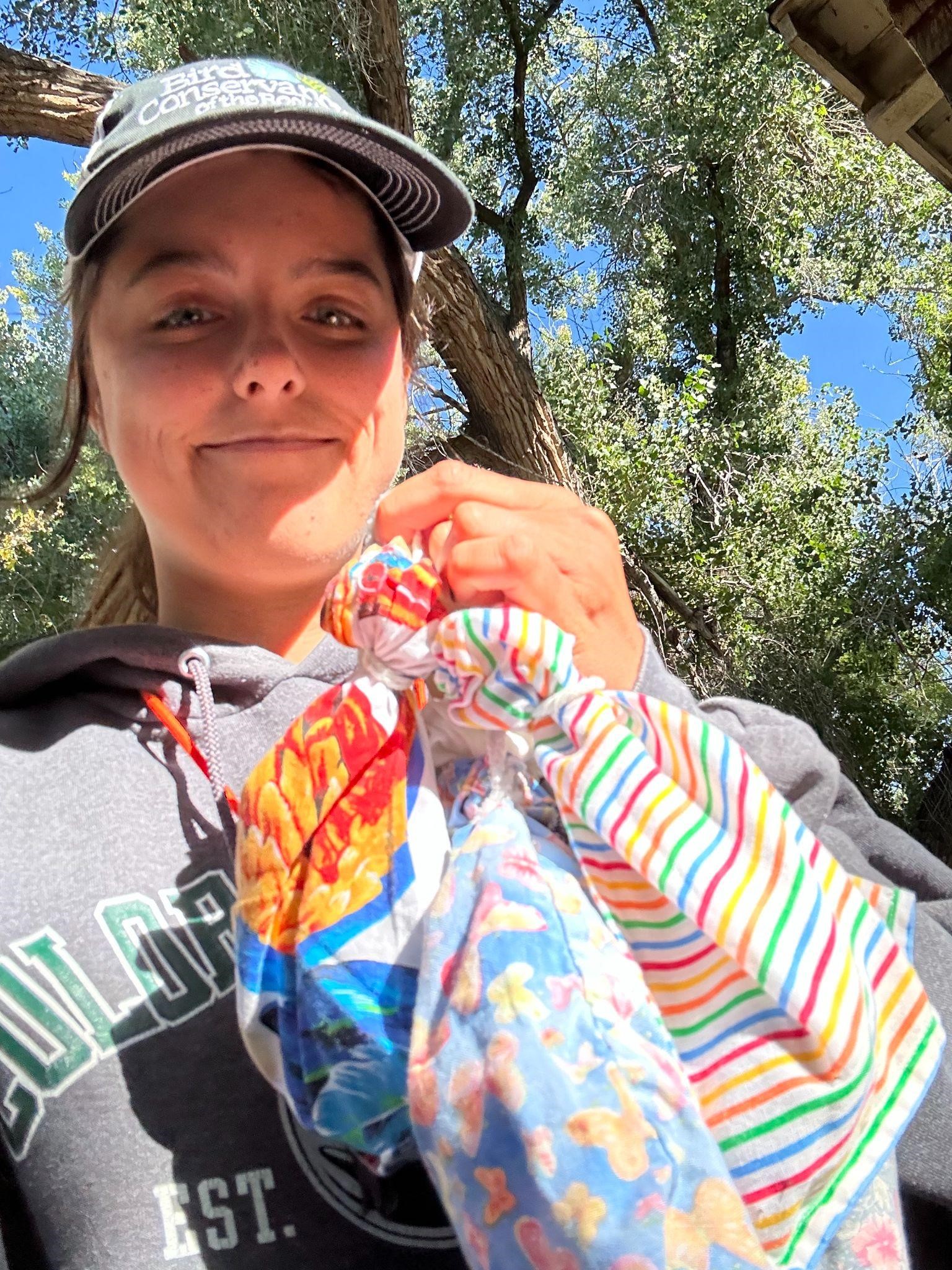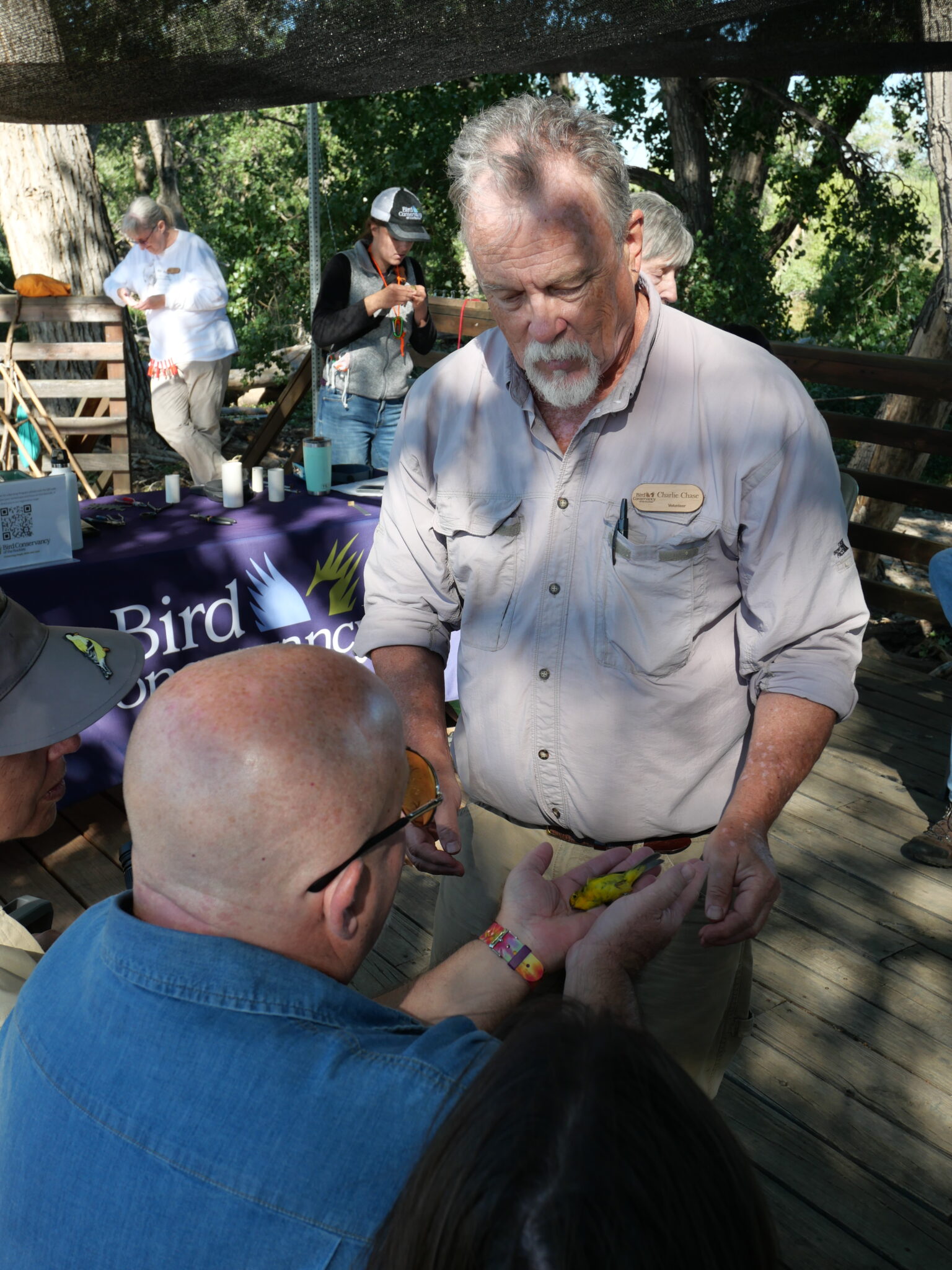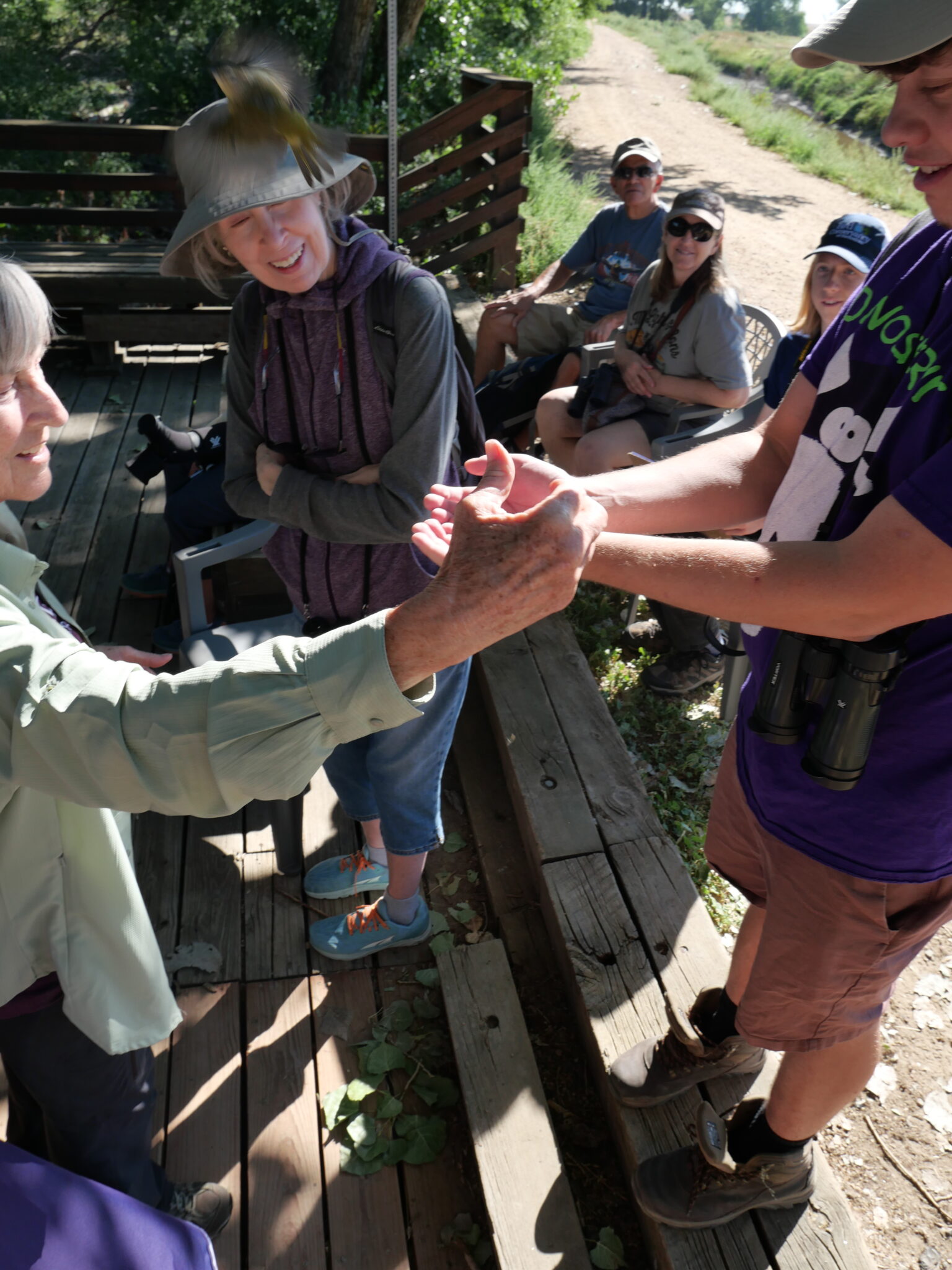The dawn chorus at Barr Lake State Park during the fall features the sound of Western Meadowlarks waking and a Great Horned Owl falling into sleep. The chorus also includes slurps of coffee, a ruckus of unpacking, and someone cracking a joke far too early for anyone to comprehend. Then comes the marching of net-openers as the well-oiled machine of dedicated volunteers and hard-working staff set about opening the Barr Lake banding station.
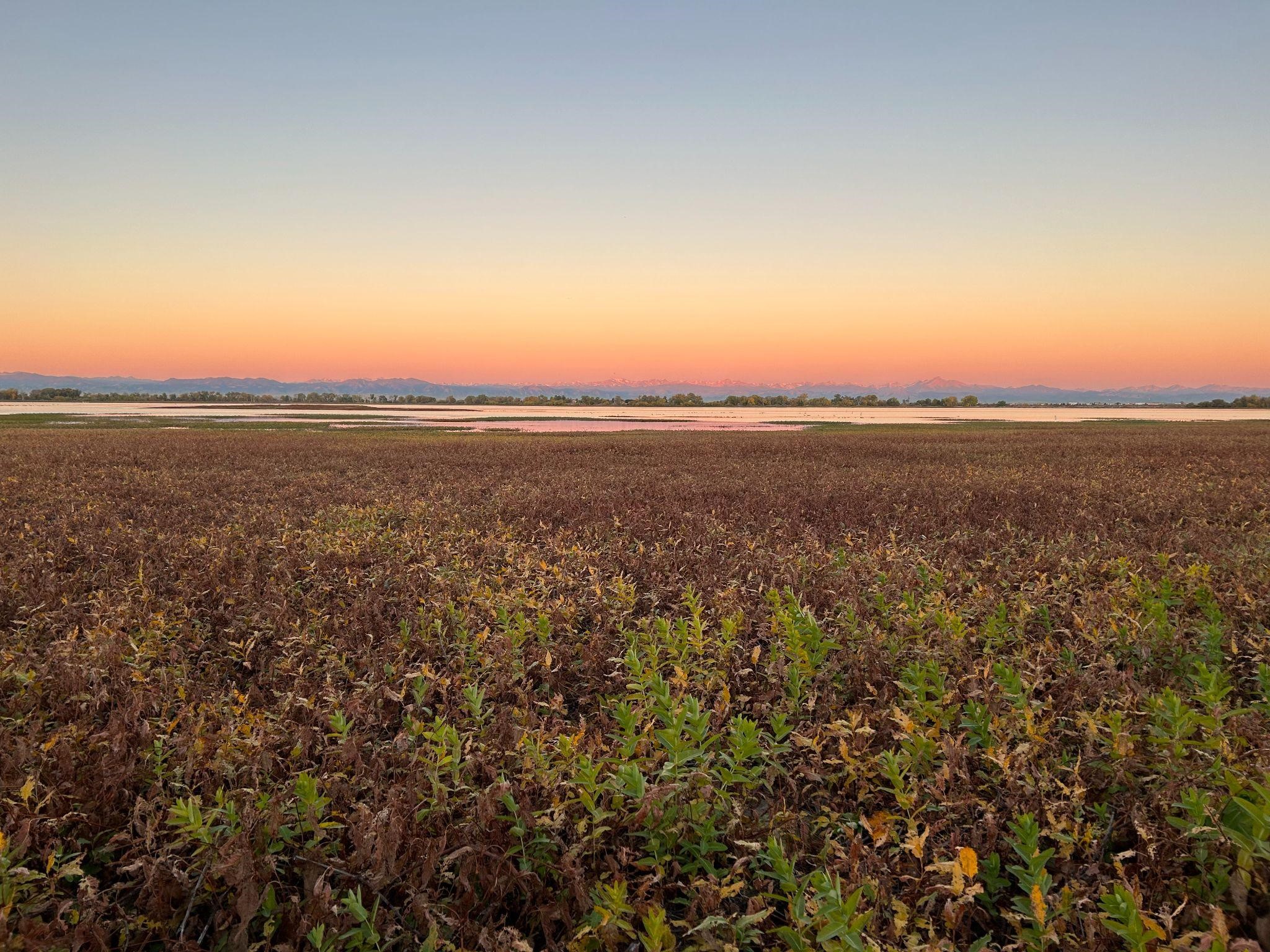
Barr Lake Banding Station at sunrise. Photo by Lauren Roux
Mist nets are up, and we all congregate around the banding table to share life updates. We play our bird ID game for the day, getting a bit too competitive over who can identify the bird with the least number of guesses. With a little luck, the next net run will bring us birds.
As extractors walk along the nets, the chatter continues, now flowing into what birds we see on the lake and bets as to which net will be most productive today. Someone extracts a bird from the mist net, and we all guess which species may be in the mystery pouch as we spot a bird bag hanging on someone’s necklace or tucked carefully into a vest to stay warm.
- Author, Lauren safely extracting a Wilson’s Warbler from the mist net
- A selfie with the birds caught in the net, kept safe and calm in cotton bags until they are banded. Photo by Lauren Roux
When we get back to the station, our recorders excitedly prepare to juggle the two to three banders who will pull out a bird and start yelling data in codes like “1B, last three 963, 70, 2 by S, S is a 3, no CP or BP, 1 fat, 17.4” as they process the bird and collect information on the bird’s age, sex, overall health, and size. Though banders don’t say it often enough, we greatly appreciate our recorders dealing with the chaos and ensuring that we don’t forget to measure a wing or collect tail feathers for the Bird Genoscape Project.
Often, we are visited by a group that has come to watch science in action. They may be school groups, seasoned birders, or anyone in between. Regardless, they will all share the experience of interacting with the banding process, oo-ing and ahh-ing as they learn that birds have translucent skin and feel the weight of a Wilson’s Warbler (comparable to the two nickels we pass around as a demonstration). One lucky visitor gets a bird placed in their outstretched hands for release. Sometimes they fly away immediately and other times they take a second or two to get their bearings before flitting off. The visitor is giddy and excited, exclaiming about how soft the bird was or how they almost flew right into their face. Those of us who frequent the station, smile knowingly as we have all felt the joy of viewing a bird so close.
- Volunteer bander Charlie placing a Wilson’s Warbler in a participants hand to be released.
- Can you spot the bird after being released?
The day goes on. Snacks are had and birds are admired. Data that contributes to avian conservation is collected and everyone gains valuable experience detangling birds from the mist net, scribing for banders, and processing birds. After a few hours it’s time to close down the station. Nets must be twirled and tucked for the night. The gear must be strategically packed away so that the box shuts, despite the almost daily proclamation that someone has forgotten to put their bird bags in the bin or we’ve left out the optivisors, which results in a quick reshuffling to make this forgotten item fit. Once everything is in order, we all walk back along the canal, birding as we go and daydreaming about our impending lunch followed by a nap.
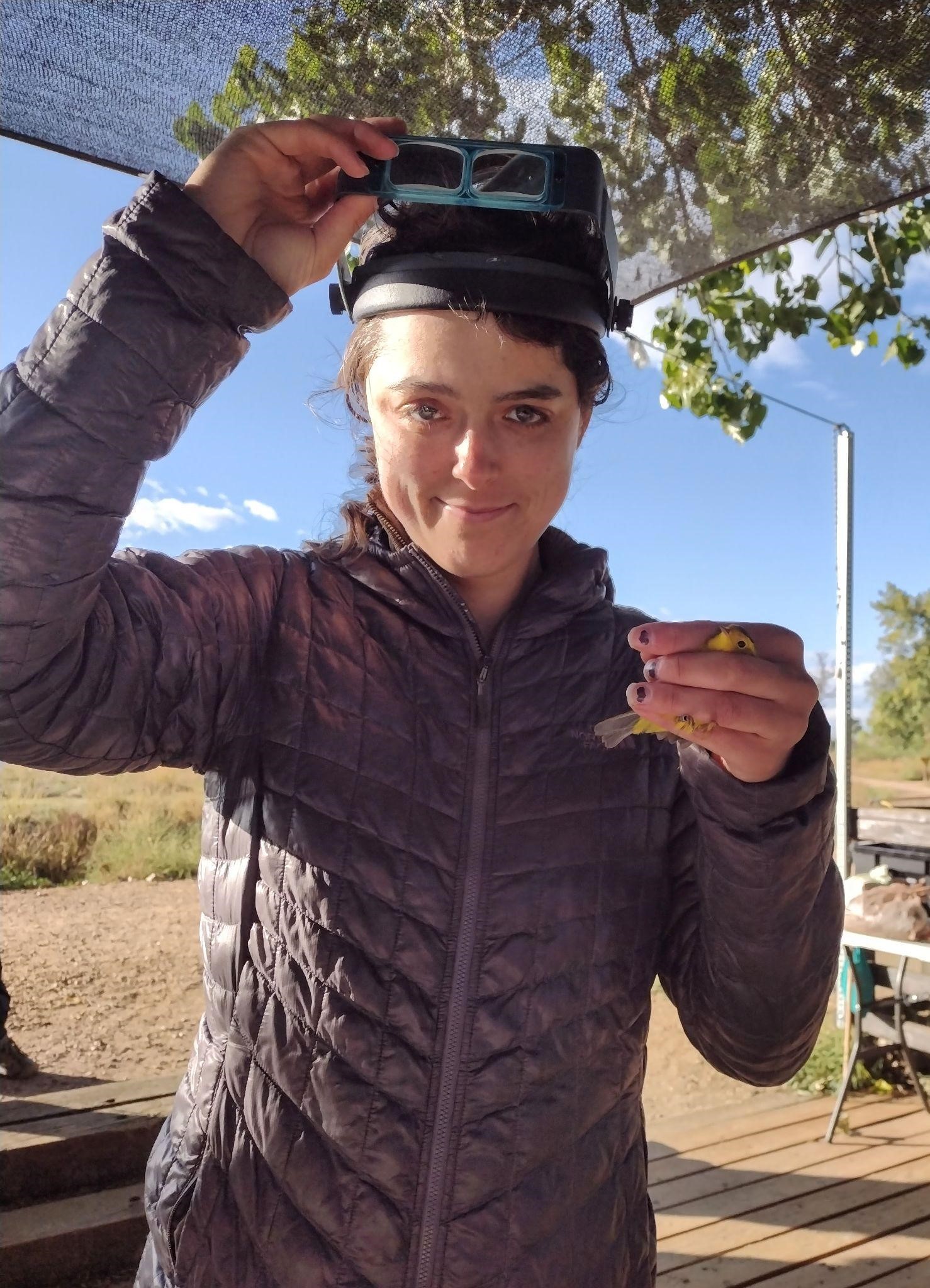
Lauren posing for Susan as they joke about how silly she looks in the optivisors, affectionately named The Nerd Goggles. Photo by Susan Rosine
I have had the privilege of spending most of my fall days in this manner as a banding trainee with Bird Conservancy of the Rockies. I’ve learned the rhythm of Barr Lake, gaining an understanding of all of the factors that contribute to running a successful banding station. I am now a proficient twirler of nets, which leads me to believe my whisking skills may also be improved (given that furling mist nets involves wrapping them into a tight twirl using the same muscles as it takes to whip cream). I have learned so much about the process of aging birds, collecting precise measurements, and identifying unfamiliar species. While I still sometimes struggle through the finer points of aging and sexing a bird, I feel a sense of confidence and ease around handling birds and uncovering their stories. By the end of the season, my resume will say that I have banded around 250 birds. But most of all, I have found community at Barr Lake. I have been inspired by my fellow volunteers, mentors, coworkers, and all of the visitors who catch the bird-loving bug. This blog post is a thank you letter to all of my new bird enthusiast friends for encouraging me to continue growing as an aspiring ornithologist. It is also a love letter to the station itself.
If you haven’t experienced the magic of Barr Lake, I strongly recommend that you visit next fall and even apply to volunteer or become the next banding trainee! Working with Bird Conservancy of the Rockies has been a privilege and I feel that I will carry what I have learned here throughout my career and into the rest of my life.
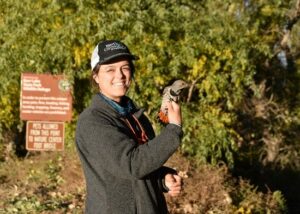 Lauren Roux was our Banding Trainee at our Barr Lake banding station during the fall of 2023. If you are interested in starting a career in conservation keep an eye on our JOBS PAGE!
Lauren Roux was our Banding Trainee at our Barr Lake banding station during the fall of 2023. If you are interested in starting a career in conservation keep an eye on our JOBS PAGE!


